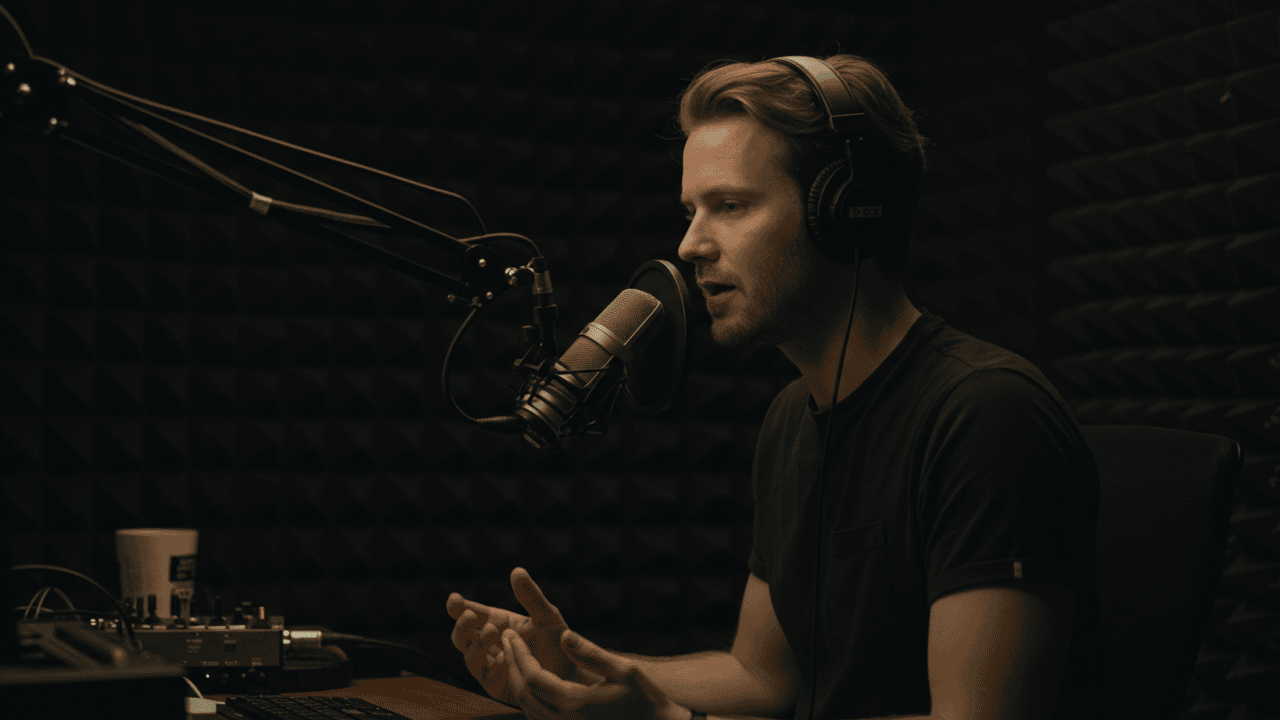
In sales, we often obsess over new logos. But what if your biggest growth opportunity is actually hiding in plain sight—past customers quietly returning to your website? In this episode of Pipeline Playbooks, we explore the power of revisit signals and how to turn them into revenue. When a churned customer checks out your pricing page or browses new product features, it's not a coincidence. It’s intent.
This episode offers a step-by-step guide to identifying, tracking, and re-engaging returning customers using tools like Dealfront and Leadfeeder. You’ll learn how to set up real-time Slack alerts, craft personalized outreach based on behavior, and reignite relationships without sounding like just another cold email. These are plays designed not just to win back business—but to build stronger, longer-lasting partnerships.
Expect to Learn:
- Why revisit signals from past customers are so valuable
- How to identify returning accounts with website tracking tools
- What page behavior reveals about current intent
- How to set up CRM-integrated Slack alerts
- Personalization tips for outreach that feels timely and relevant
- When and how to offer incentives to accelerate reconversion
- Strategies for long-term nurture and relationship rebuilding
Ready to level up your sales and marketing strategies? Subscribe now and start transforming your approach to revenue!
Looking to put these strategies into action? Dealfront’s Marketing and Sales solutions are built to help you do just that. Whether you’re aiming to boost lead quality, improve conversion rates, or engage high-intent buyers at the right moment—our platform gives your team the data, tools, and insights to make it happen. Explore how Dealfront can support your next campaign or sales sprint.
Connect with us: LinkedIn: https://www.linkedin.com/company/dealfront/ Facebook: https://www.facebook.com/getdealfront/ Instagram: https://www.instagram.com/getdealfront/ TikTok: https://www.tiktok.com/@dealfront X: https://x.com/getdealfront YouTube: https://www.youtube.com/@dealfront
![Alicia Morgan]()
Alicia Morgan
at Dealfront
![Ethan Cole]()
Ethan Cole
at Dealfront
00:00 You know that little sting when a good customer decides to move on? Yeah, definitely felt that. You're left wondering, you know, will he ever look back? Yeah. What if you could get a nudge, like a sign they were thinking about returning, maybe checking out your website again? That's the intriguing area we're exploring in this deep dive. Exactly. Today, we're zeroing in on those digital signals, the hints of renewed interest, specifically.
00:27 website revisits from your past customers. And our guide for this is a really insightful piece from Dealfront. It's called Re-engage Past Customers Who Revisit Your Website. OK, so Dealfront's take on it. And our goal today is, well, pretty straightforward, isn't it? We want to understand why these revisits matter so much. Crucial. How you can actually spot them happening, which feels like the magic trick part. It used to be. And then the practical steps. How do you turn that spark of interest
00:55 back into real repeat business and maybe even stronger relationships. Yes, exactly. And forget cold outreach here. This isn't about that. This is about making a smart, timely connection with people who will already know who you are. Which feels way more efficient. And it is. This isn't just theory. Think about the potential efficiency gain. Reaching out to someone who's been a customer before. It can be significantly more effective than trying to win over someone totally new. Makes sense. Less groundwork. Way less.
01:25 You're often looking at shorter sales cycles, maybe a lower cost to reengage them. We're gonna uncover some real aha moments, I think, as we look at how to identify and maybe more importantly, interpret these signals. Okay, let's really dig into this revisit signal then. Why is it so powerful? What makes it such a key indicator? Well, at its core, a past customer coming back to your website, it just suggests, you know, a rekindled interest or maybe just curiosity. They're not just randomly
01:54 browsing the web and landing there usually, something specific likely prompted them to come back to your digital space. Right, something changed. Exactly. And this aligns perfectly with this whole idea of intent signals. Intent signals, right. We hear that term thrown around a lot. What does it really mean in this context? OK, so think of them as events, occurrences maybe that suggest a shift, a change in a company's priorities or their needs.
02:20 could be triggered by anything, really, new budget, new project, competitor issues. But the key thing is it signals a moment, a moment when they might be more open to a new conversation, or maybe a solution like yours again. And timing is everything, I guess. Always. Timing is critical when you see these signals. So a past customer specifically returning to your website that's like a flashing neon intense signal. Absolutely. It's a prime example.
02:47 It suggests their situation might have shifted, maybe their needs evolved, or perhaps they're just reevaluating their current tools or suppliers. And because they already have that history with your brand, that familiarity, this revisit basically cracks open the door for a potentially really warm re-engagement. That makes total sense. mean, it's gotta be a much warmer lead than someone who's literally never heard of you before. Precisely. You're leveraging that existing familiarity, maybe some residual trust.
03:15 And generally that makes it more cost effective than going out and acquiring entirely new clients from scratch. Right. They already get the basics of what you do. They have some level of understanding, yeah, of your core value proposition. And it's not just about landing another sale immediately, is it? There's probably more to it. Oh, definitely. When a past customer revisits, it's actually a fantastic opportunity, a chance to understand what might have changed for them. Like what?
03:41 Well, what new challenges are they facing now? Are they maybe expanding into new areas you could help with? This kind of insight, it can really pave the way for relevant cross-selling or maybe upselling products or services they just didn't need the first time around. Ah, so you're not just trying to sell them the same thing again. You're potentially offering a better, more tailored solution based on where they are now.
04:04 Exactly, that's the ideal scenario. And by proactively reaching out when they've shown this interest, you're also reinforcing your brand's commitment. You know, showing you're still invested in their success. Builds trust. It really does. It positions your company as more of a long-term partner, not just a one-off provider they used once. Okay, okay, I get it. We understand why this is important. But the million dollar question, right? Yeah. How do you actually know, how do you know when a past customer is back on your site? They don't exactly...
04:34 you know, ring a digital doorbell. Ah, no, they don't. And that's been the traditional hurdle, the big challenge. Historically, it was, well, it was almost impossible to know for sure when a former customer was browsing your website. So what do people do? Just guess. Pretty much. Sales teams were often left making, you know, educated guesses at best, which could lead to missed opportunities or worse, those really awkward, out of the blue, cold calls that, let's be honest, nobody enjoys getting.
05:02 Oh, I know exactly the ones you mean. The just touching base email that feels completely random and disconnected from anything I've actually been doing. Yeah, definitely been on the receiving end. Right. And it's frustrating for everyone involved. The customer might feel bothered, interrupted, and the sales team is essentially operating in the dark. Valuable chances to reconnect. They just vanished. Poof. But thankfully, things have moved on. The Dealfront article talks about sauce, solutions, website tracking. Technology's caught up. Absolutely.
05:31 Big time. Advancements in technology, particularly in analyzing IP data. Now let us identify when a specific company, including one that's a past customer, is visiting your website. OK. IP tracking. So you see the company's digital footprint. Exactly. These tools can flag returning visitors who match your ideal customer profile list, or crucially here, companies that were previously marked as churned accounts in your system, maybe in your CRM. Wow. It gives you a near real-time heads up they're showing renewed interest.
06:01 That's a huge step forward. So it's not just knowing that someone from say Acme Corp visited, but you might know what they looked at. Precisely. That's the other key part. Good IP tracking tools can often reveal the specific pages they're browsing. Things like your pricing page, maybe new product updates, specific case studies. Okay. The details matter. They really do. This level of detail allows for much, much more targeted outreach. Instead of that generic, hey, remember us message, you have a much
06:30 clearer idea of what actually caught their attention this time. Okay, so how do we actually put this into practice? The article mentions Leadfeeder by Dealfront specifically. Let's walk through those steps. How does it work? Right, so the first essential step is simply being able to identify those past customers when they show up. And Leadfeeder offers a pretty direct way to do this. Basically, you need to create a defined list within the platform of your customers who have churned.
06:56 OK, a list of churned customers. And there are a couple of ways to get that list into Leadfeeder, right? Exactly. Option one is a bit more hands-on. You can compile a list yourself, maybe from spreadsheets or old records, and manually input or upload that data directly into Leadfeeder. That sounds like it could take a while if you've got a long history or lots of churned clients. It could.
07:17 And that's where the second, usually more efficient option comes in. If you have this churn information already stored neatly in your CRM system. Which most companies should, hopefully. Hopefully, yeah. Then you can usually download it as a file like a CSV and then easily upload that straight into Leadfeeder. They even have a specific feature, the company importer, within their data care tab designed to make this process smoother. Okay, company importer. Got it. So once that list of churn companies is inside Leadfeeder.
07:47 What's next? So Leadfeeder lets you create what they call custom feeds. Think of them as saved searches or filters. You go to Topple, plus Create Custom Feed. Then under the Filter section, you add a new filter. You search for the filter type company list, set the condition to Is, and then you select or upload the list of churned customers you just prepared. Got it. Pretty logical. And the article mentions tagging these companies.
08:12 Why bother with that? Yeah, tagging is optional, but I'd say highly recommended. It's really valuable. You can apply a tag like say churned or past customer to all the companies on that uploaded list. And that helped how? It just makes it much simpler down the line to filter and segment all your website visitors. You can quickly isolate just the churned ones or combine filters. It saves time, makes your analysis way more efficient, keeps things tidy. Makes sense for organization. Now the crucial bit, how do you get notified?
08:42 like instantly when one of these tagged churn companies hits your site, you don't want to find out days later. Exactly. Real time is key. And this is where integrating Leadfeeder with communication tools like Slack becomes really powerful. The Slack integration. Yep. If you connect Dealfront, which includes Leadfeeder, with your Slack workspace, you can set up automatic alerts.
09:05 These alerts can notify specific people or channels, maybe your sales team, maybe customer success. The very moment a past customer from your churned list is identified on your website. Real-time alerts, that sounds absolutely crucial for acting quickly while the interest is fresh. How do you set those notifications up? Within the Slack integration settings in Dealfront, there's a key option. You need to look for the frequency drop-down menu, and you want to select the option that says something like, when new companies appear. OK.
09:34 when new companies appear, not just a daily digest or something. Exactly. That ensures you get that immediate ping in Slack as soon as one of the companies on your turn list triggers a visit. Timing, again, is everything. OK, so the notification comes through on Slack. Ding. We know who is back. What's the next layer? What else do we need to know? Right. So knowing who visited is step one. The next absolutely vital step is to analyze their behavior on your website. Just knowing they've visited isn't quite enough context.
10:03 You need to know why, or at least get some clues. Exactly, you need to understand what specifically they were looking at, what drew them back. So diving into the nitty gritty of their browsing activity, what are the key things we should be paying attention to there? You really want to focus your attention on the specific pages they navigated to. Were they looking at your pricing structure again? Did they explore pages about your latest product updates or new features? Perhaps they spent time
10:30 reading relevant articles on your company blog or maybe looking at case studies in their industry. And what do those different actions suggest? Well, they provide valuable clues about their current interests and potential needs. For instance, someone reviewing product updates might be curious if new features solve a problem they're grappling with now. Someone on the pricing page is, well, likely thinking about cost and budget again. Right. And it's probably not just about a single page view, is it? The article mentions
10:59 intent events. What are some examples of those more significant signals? Exactly. You're looking for patterns. Patterns of behavior that indicate stronger interest than just a casual glance. Like what? This could include things like multiple visits to your site within a short time frame. Maybe they came back yesterday and again today. Or if they spend a significant amount of time on key pages.
11:23 really digging in. So if a past customer repeatedly visits what you'd consider high value areas, like those case studies showing successful outcomes, maybe your demo request form, or definitely those pricing pages, it strongly suggests a real intent to potentially reengage. Because of the high value digital breadcrumbs, The equivalent of them spending ages examining a specific product in a physical store. That's a great analogy, precisely. This kind of behavioral data is increa-
11:51 incredibly helpful because it helps you prioritize your outreach efforts. so you know who to focus on first. Exactly. You can identify who seems to be showing the most active interest and then tailor your follow-up strategy accordingly. Focus your energy where it's most likely to pay off. All right. This is making sense. We've identified them. We've seen what they're looking at. Analyze the intent signals. Now comes the crucial step. Actually reaching out. Crafting that personalized outreach message. What are the key elements here?
12:20 How do we not mess this up? Good question. Personalization is absolutely paramount, non-negotiable. The very first thing you should do is acknowledge your previous relationship. Don't pretend they're a stranger. Please don't. Acknowledge it. It immediately creates a warmer connection, shows you remember them, hopefully as a valued customer. Yeah. Definitely helps avoid that feeling of just being another name on some automated list. Exactly. OK, next step.
12:46 highlight any significant updates or improvements that have happened since your last main interaction? Like what? Have you launched a killer new feature that directly addresses a pain point they might have mentioned way back when? Have you achieved some recent big successes with clients in their specific industry? Sharing this demonstrates that your company hasn't stood still. You're evolving and potentially offering solutions that are much more relevant to their current needs. And it's absolutely essential, I assume.
13:15 to directly link those updates back to what they were just looking at on your website. 100%. If they spent five minutes on a specific new product page or read a particular case study about, say, efficiency gains, make a direct reference to that in your message. OK. It clearly shows you've, quote, done your homework, that your outreach isn't just a generic blast hitting everyone. This makes your message feel significantly more relevant, more thoughtful, and way more impactful.
13:44 So we've crafted this thoughtful, super personalized message. What are the different ways we can actually deliver it? How should we reach out? The article outlines several effective methods, and the right one might depend on the relationship or context. Email outreach is often a really good initial approach. It's less intrusive than a call sometimes. Right. You can send that personalized email we just talked about, specifically mentioning their recent visit, maybe referencing the particular pages they viewed, and crucially,
14:12 include helpful resources. Links to relevant demos, maybe an upcoming webinar that touches on what they were looking at, or those case studies again, make it easy for them. And the article even gives some example subject lines and email templates, which is super helpful. I like that one. We noticed your recent visit exciting updates since we last connected. It feels friendly, but also hints at value. It's designed to be exactly that. Friendly, intriguing, value focused.
14:40 and the email templates they provide, they really emphasize acknowledging the visit, mentioning those specific pages, highlighting relevant updates tailored to their likely interests, and offering a low-pressure way to reconnect, like scheduling a brief chat or maybe just offering to send more info. Keeps it light. Yeah. There's even a template that focuses more on reminding them of your key unique selling points, but framed in the context of their revisit. What about other channels picking up the phone? Or maybe a direct message on a platform like LinkedIn?
15:09 Yeah, those can be very effective too, especially maybe as a follow up to an initial email if you don't hear back or if the signal is really strong. A personalized sales call or a carefully worded LinkedIn message allows for a more direct two way conversation. Better for discovery. Exactly. Better for really understanding their current challenges and specifically positioning how your updated solutions might address those needs today.
15:36 The sales call template in the article seems like a really useful framework for that kind of conversation. It covers everything from building that initial rapport, acknowledging the visit, asking those open-ended questions. It does. It's a solid guide. It emphasizes acknowledging the website visit right near the start. Get the context out there. Then understanding their current focus through thoughtful, open-ended questions. Then you can connect your products, features, or services directly to their potential pain points. And offering value, not just pitching.
16:05 Yes. Offer concrete next steps, like sharing those relevant case studies, maybe offering a truly personalized demo based on what they looked at. That's key. And even after the call, don't forget the follow-up email. Summarize what you discussed. Provide any promised resources. Keep the momentum going. OK. But what if they just don't respond? You send the great email, maybe leave a thoughtful voicemail. Crickets. Should we just give up and consider it a lost cause at that point?
16:34 Not necessarily, no, the article wisely suggests putting those non-responders into an automated but still thoughtful re-engagement sequence. Ah, like a nurture campaign specifically for them. Exactly. This could be a series of carefully crafted emails spaced out over time designed to gently reignite their interest. You could showcase different benefits, highlight features they didn't look at but might find valuable, or even just share relevant thought leadership content or industry insights. So keeping the lines of communication open, providing value,
17:02 even if they're not immediately ready to jump back in with the purchase. Smart. Now, what about adding a little extra nudge and incentive? that work here? Oh, yeah. Offering a tailored incentive can be a remarkably effective tactic, especially for this group. Why especially for them? Because they already know you. But maybe they need a little push. So this could take the form of an exclusive discount, maybe a complimentary consultation session, or perhaps a limited time promotion.
17:31 specifically targeted at returning clients. It's kind of like saying, hey, we really value you considering coming back. Puts your money where your mouth is. Exactly. It demonstrates that you appreciate their renewed interest, and it gives them a tangible, compelling reason to reengage now rather than putting it off. Because they already have that baseline familiarity with your brand and its value, these strategically timed incentives can be particularly effective in overcoming any lingering hesitation they might have.
17:59 Maybe about price, maybe about switching hassle. Makes sense. Okay, so let's say we've reached out. Maybe we offered a sweet incentive and they're responding. What's the next stage? How do we keep that positive momentum going and not fumble the ball? Right, you've got them re-engaged. The key now is consistent and thoughtful nurturing of that relationship. It's not just about getting them back for one more transaction. It's about the long game. Exactly. It's about rebuilding or strengthening a long-term mutually beneficial connection.
18:28 And this involves, first off, timely and helpful follow-up. Respond promptly to any questions they have. Provide any additional information they request quickly. Genuinely demonstrate your interest in their ongoing needs and success. So it's not just a quick, thanks for coming back, here's the invoice, and then silence again. It requires ongoing effort and attention. Precisely. You also want to continue providing value-driven content. Maybe share relevant resources, perhaps new case studies that mirror their situation.
18:56 or updates to your product that's specifically aligned with what you now understand about their interests, but crucially, without being overly aggressive or constantly pushing the sale. Right, value first. And it sounds important to continually sort of gauge their temperature, assess their level of interest as you go. Absolutely. You need to tailor your follow-up approach based on their responses and their level of engagement. Are they enthusiastic? Asking buying questions?
19:22 then maybe is the right time to suggest that personalized demo or a trial of your latest features. if they're more hesitant? If they seem more cautious or maybe just exploring options, then plan for more periodic, lighter check-ins. Position yourself as a helpful resource, maybe an industry expert they can turn to rather than just a persistent salesperson breathing down their neck. Got it. And the longer-term strategy involves these ongoing check-ins as well, building it into your process. Yes, definitely. For those who re-engage,
19:52 Even if not immediately buying, adding them to a relevant long-term nurture sequence in your CRM is smart. Or just setting calendar reminders for future check-ins. This ensures you continue to engage them over time with valuable updates, maybe relevant special offers down the line, and insightful industry information. It's that long-term approach that really fosters trust and significantly increases the likelihood of them becoming truly loyal repeat customers again. OK, so let's zoom out. If we actually do this...
20:21 If we effectively implement this strategy of identifying and re-engaging these past website visitors, what kind of results, what positive outcomes can we realistically expect? Well, the article highlights several really key benefits. Firstly, and maybe most obviously, you should observe a noticeable increase in repeat business. More returning customers actually buying again. Right. Because these customers have that prior experience with your product or service, they typically have a much higher propensity to convert compared to completely new.
20:51 cold leads. That makes intuitive sense. The initial barrier, that trust barrier, and just understanding what you do, it's already partially overcome. Exactly. Secondly, you can often anticipate a significantly shortened sales cycle. Faster deals. Generally, yes. Engaging with former customers usually requires less of that foundational education about your basic offerings. They get it. Which allows you to guide them through the decision-making process more quickly and efficiently.
21:18 Less time spent on the basics, more on their current specific needs. And ultimately, it sounds like it all leads back to building stronger, maybe more resilient customer relationships overall. Absolutely. That's a huge outcome. Preactively reaching out, showing you notice them, demonstrating that you genuinely value their potential return that can significantly strengthen your customer relationships. It has the potential to transform former customers, even ones who left on maybe not great terms.
21:45 into enthusiastic advocates for your brand. Wow, advocates. Yeah. Paving the way for long-term loyalty, maybe even opportunities for expanded partnerships or referrals down the road. So boiling it all down, the crucial takeaway here seems to be that those visits from past customers to your website, they aren't just random digital noise. Not at all. They represent a really significant strategic opportunity, a chance to capitalize on existing relationships and those
22:14 really valuable, intense signals for, well, more efficient business growth. Precisely. Couldn't have said it better. And for you listening right now, I'd really encourage you to consider how you might identify and, more importantly, strategically act upon these revisit signals within your own organization. Yeah, how could this apply to your situation? Right. Think about the specific tools, maybe the processes you could put in place, regardless of whether your main focus is sales or customer success, or maybe even
22:43 just understanding general interest in what you offer. There's value here across the board. And here's maybe a thought to really chew on as we wrap up. In today's business landscape, which is often so hyper-focused on constantly acquiring new customers, right? The next shiny object. How much untapped potential genuinely resides within the relationships you've already invested time and energy in building? What if, proactively, thoughtfully, reaching out to those familiar faces who are returning to your digital doorstep?
23:13 What if that becomes the most surprisingly effective, maybe even innovative growth strategy of all? That's a powerful question to ponder. And if you are interested in exploring more detailed strategies, more tactical insights for optimizing these kinds of go-to-market efforts, Dealfront actually provides a valuable resource called Playbooks.
23:32 They dive into specific plays like this. Ah, playbooks. Good resource. Yeah, I'd highly recommend checking those out for more guidance if this topic resonates. Ultimately, it really does seem to come down to truly understanding your customer's behavior, their digital signals, and recognizing the immense, often overlooked, value and actively nurturing the relationships you've already worked so hard to establish in the first place. Absolutely. It's about transforming what could be a missed opportunity into a renewed and potentially even stronger partnership.






